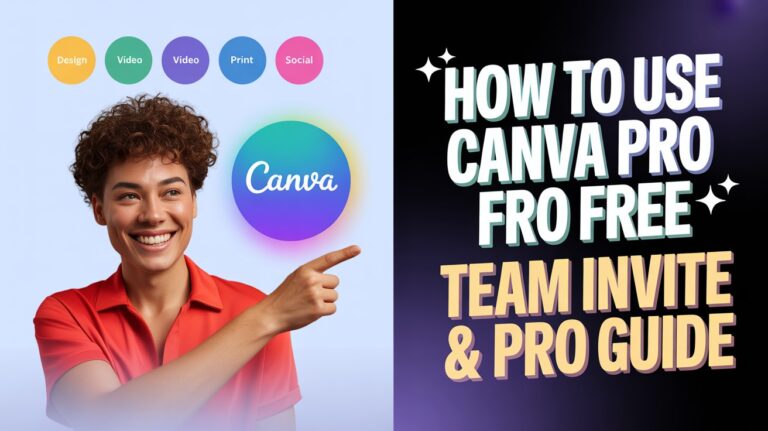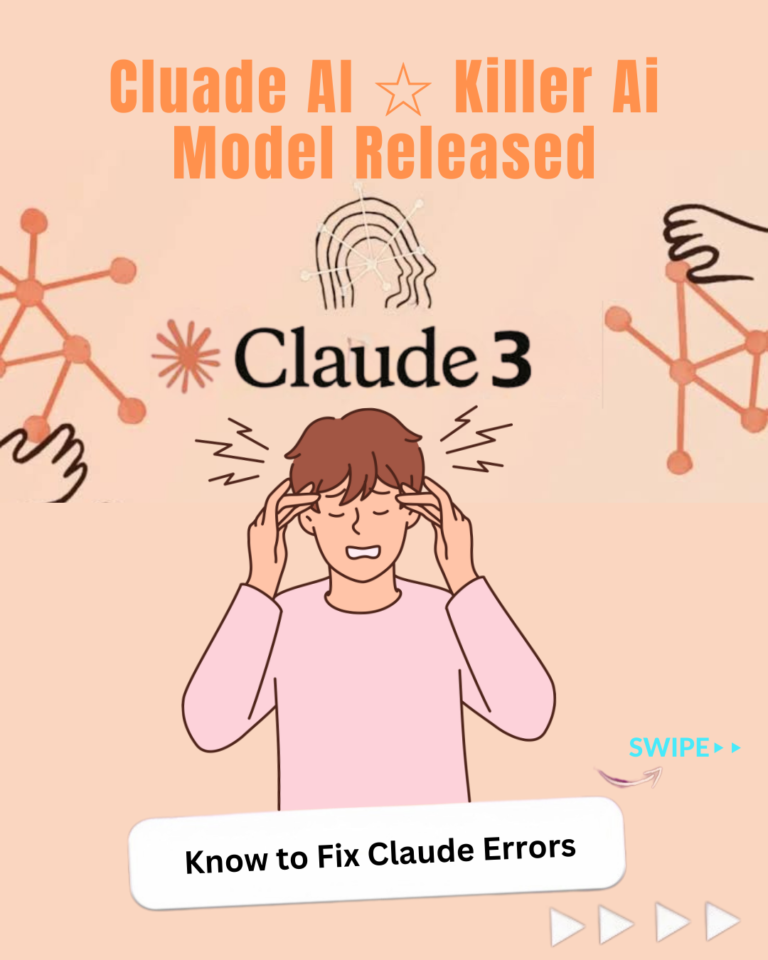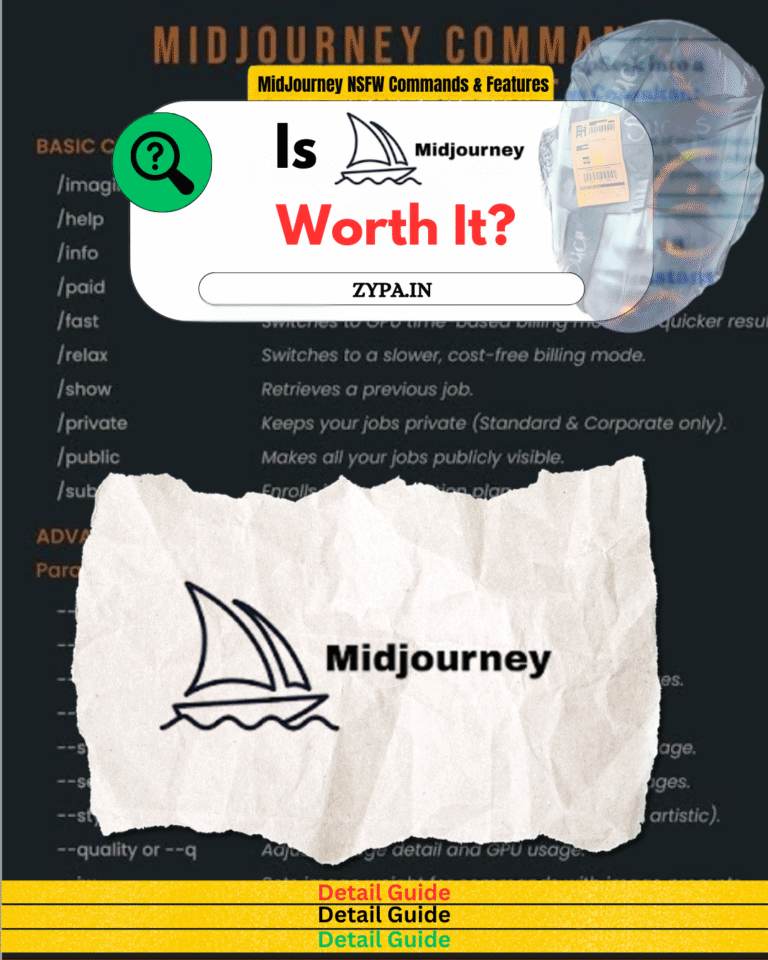While the average researcher can only generate 4-5 pages per day—and that’s on a good day—89% of doctorate students struggle with academic writing skills, spending up to 22 hours researching and writing a single 1,500-word paper. What if I told you that there is an AI research helper that can reduce your research time by 80%, create organized literature reviews, and analyze more than 250 million scholarly articles in a matter of minutes? The way that researchers find, evaluate, and synthesize scholarly information is being revolutionized by AnswerThis AI. Unlike generic AI tools, AnswerThis focuses specifically on the academic workflow, from identifying research gaps to producing properly cited literature reviews that sound academic (unlike ChatGPT wrote them).

What is AnswerThis AI? (The Academic Revolutionary)
The harsh reality of academic research is that, despite the fact that the AI market is growing at a 35.9% compound annual growth rate (CAGR) and is expected to reach $1.8 trillion by 2030, the majority of academics continue to rely on antiquated research methodologies. Academics are forced to spend weeks on literature studies while content creators are using AI to create 30 days of posts in 3 hours.
Response → This alters everything.
AnswerThis isn’t your typical AI chatbot; it was created especially for professional and scholarly inquiry. More than 250 million research papers, academic journals, preprints, books, technical reports, and conference proceedings are processed by this complete literature review generator. Imagine having a PhD-level research assistant who can read thousands of papers at once, never sleeps, and never gets tired.
Essential Elements That Set AnswerThis Apart →
- 🔍 Structured Literature Reviews → AnswerThis produces academic-caliber literature reviews with appropriate paragraph-level citations, in contrast to Perplexity or ChatGPT.
- 📚 Personal Research Library → Save sources, upload your own papers, and keep everything organized in one location.
- 🎯 Citation Maps → Find foundational studies and visualize research relationships.
- ✏️ Paper Editing Tools → Integrated editing tools created especially for scholarly writing.
- 🔒 Privacy-First → AI models are never trained on your documents or shared.
What’s the difference? AnswerThis provides research-grade insights that you can genuinely reference in your thesis or research paper, whilst other AI programs only provide generic responses.
Are you prepared to up your research game? Let’s get started on making good use of it.

Your Initial Half-Hour with AnswerThis
The majority of individuals encounter new AI technologies by mindlessly clicking about, much like they would when perusing social media. Astute researchers have a system in place.
Here’s how to configure AnswerThis to have the most impact during your first session →
Step 1 → Establishing a Strategic Account (5 minutes)
- Create an account by going to answerthis.io.
- Choose to join up with Google or email (I suggest Google for quicker access).
- Pro tip → Some plans offer student discounts, so if you can, use your institutional email.
Step 2 → Set Up Your Filters for Research (10 minutes)
Most people make mistakes here. Without establishing their parameters, they immediately begin their search. Avoid being that individual.
Important Filter Preferences →
- Source Type → Select “research papers” for scholarly work and merely include “internet” for more current advancements.
- The time frame should be set to the last five years for cutting-edge fields and more than ten years for established studies.
- Be precise and use “machine learning” rather than “computer science” as your field of study.
- Low-impact publications (50+ citations for established fields) should be filtered away.
Step 3 → Conduct Your Initial Strategic Search (15 minutes)
The key that distinguishes professional researchers from amateurs is this → Start broad, then narrow down.
The Three-Search Approach →
- The phrase “Find research gaps in [your topic] and suggest research directions” refers to gap identification.
- “Key theories and foundational studies in [your field]” is the foundation building statement.
- The phrase “Latest developments in [your specific area] since 2023” refers to recent advancements.
Instance in Operation →
Rather than looking up “social media marketing,” try this →
- “Research gaps in influencer marketing effectiveness measurement”
- “Theoretical frameworks for social media consumer behavior analysis”
- “Recent developments in social media algorithm impact studies”
This strategy is exactly in line with what successful content creators do, who first research their target (in this case, the academic sector) before producing material.
Quick wins already? Most likely, you’re finding research topics you never thought of.
Advanced Features That Are Actually Important for Research
Let’s unlock the features that will make your boss believe you’ve suddenly turned into a research machine now that you’ve mastered the fundamentals.
Academic GPS → Citation Maps
The issue with traditional research is that it’s like trying to identify links by stumbling from paper to paper without a map.
The Solution → AnswerThis’s Citation Map technology provides a quick overview of the research environment by visualizing the connections between papers.
How to Use It →
- Choose a seminal work in your field.
- Select “Citation Map” to view its network of research.
- Determine which foundational papers have received the most citations (the thick connecting lines).
- Look for contemporary studies that reference your primary sources (possible gaps).
Pro Strategy → To find research clusters—groups of related papers that reflect key issues in your field—use citation maps. When it comes to thorough literary critiques, this is invaluable.
Organized Literature Review vs. Dynamic Research Assistant
The majority of individuals misuse these features. Here’s when to use each one →
Use of the Dynamic Research Assistant →
- Developing a list of potential research questions
- Investigating new subjects
- Fact-checking quickly
- Formulating assumptions for research
Use of a Structured Literature Review →
- Sections of the final paper
- Thorough topic summaries
- Academic writing with a lot of citations
- Chapters of the thesis
The Time-Saver → The Extract Data Feature
You can save more than ten hours each paper just by using this option. Here’s how →
- Save pertinent articles to your library (try to find 20–30 sources).
- Utilize “Extract Data” to aggregate the most important findings from every study.
- Switch between table and list displays to suit various analysis requirements.
- Export as CSV for reference management or additional analysis.
Game-Changer Tip → Look for trends in study techniques, sample sizes, important findings, and limitations using the table view. This greatly simplifies the process of identifying research gaps.
Do you feel as though you’ve discovered research cheat codes? Excellent. You need that exact competitive advantage.

A Comparative Analysis of AnswerThis VS Perplexity → The Research Showdown
The question that everyone is asking is, “Should I use AnswerThis or Perplexity for research?” Here is an honest comparison that will help you save time and money.
A Head-to-Head Analysis
| Feature | Perplexity | AnswerThis | Winner |
|---|---|---|---|
| Purpose | General-purpose search engine with academic focus | Specifically designed for academic study | AnswerThis |
| Quality of Citations | Simple source links | Academic citations at the paragraph level | AnswerThis |
| Book Reviews | Simple summaries | Organized, thorough reviews | AnswerThis |
| Paper Analysis | Limited file processing capabilities | PDF upload and analysis | AnswerThis |
| Source Quality | Excellent source of real-time information | Peer-reviewed sources are the focus | Perplexity |
| Research Library | No library function | Integrated system of organization | AnswerThis |
| Speed | Very quick responses | Moderate (in-depth analysis) | Perplexity |
| Price | Pro plan for $20/month | Academic-focused pricing | Tie |
When to Utilize Every Instrument
AnswerThis should be used when →
- Composing research papers or thesis chapters
- Performing comprehensive reviews of the literature
- Accurate academic citations are required.
- Constructing extensive research libraries
- Examining several documents at once
Perplexity should be used when →
- Fact-checking quickly
- Locating current events or news
- Examining general subjects first
- Quick, conversational responses are required.
- Investigating recent occurrences or patterns
The Conclusion → Why Not Both?
Astute academics employ a hybrid approach → Use AnswerThis for in-depth scholarly study after using Perplexity for rapid discovery and up-to-date information. Each has its sweet spot, much like employing various AI tools for distinct content generation needs.
Workflow in the real world → Use AnswerThis to examine the scholarly literature underlying the current controversies in your field after using Perplexity to comprehend them.
By using this methodical strategy, you surpass 95% of researchers who only use one instrument.

Detailed Research Procedure (Replicate This Step)
This is the precise 5-step procedure that I have honed after studying the methods used by leading researchers. This is a tried-and-true process that continuously yields excellent outcomes; it is not theory.
Step 1 → Identification of Research Gaps (Day 1)
The Strategic Method →
Search Keyword → "Find research gaps in [your broad topic] and suggest specific research questions" Filters → only research papers, last five years, and at least twenty citations
What to Search for →
- Gaps in methodology (missing research techniques)
- Gaps in the population (understudied groups)
- Geographical gaps (few studies in a certain region)
- Temporal gaps (older research that has to be updated)
- Gaps in theory (missing frameworks)
Action Items →
- Keep five to ten gap-related papers.
- Take note of particular gaps that are highlighted in several articles.
- Determine which gaps fit your hobbies and areas of experience.
Step 2 → Establishing the Foundation (Days 2-3)
The strategy for queries →
Search Keyword → "Foundational theories and seminal studies in [specific gap area]" Filters → Books and research papers, at least 100 citations, and all time periods
Advanced Technique → To find the most cited publications in your region, utilize Citation Maps. These serve as the theoretical cornerstone of your work.
The process of expanding your knowledge base →
- Examine the top 20 fundamental papers’ abstracts.
- Create summaries of important theories with AnswerThis.
- Make your notes for the “Theoretical Framework”
- Choose five to seven key papers for in-depth examination.
Step 3 → Analysis of the Current State (Days 4-5)
The Current Emphasis →
Search Keyword → "Recent developments and current research in [your specific area] methodology and findings" Filters → only scientific papers, at least 10 citations, and the previous two years
The framework for critical analysis is →
- Which approaches are popular right now?
- What are the main arguments and disputes?
- Which results are being contested versus replicated?
- Which new methods or technologies are being developed?
Step 4 → Synthesis and Analysis (Day 6)
The Magic Happens Here → Apply the “Extract Data” function in AnswerThis to every paper you have stored.
The methodical approach →
- Make methodology comparison tables.
- Connect the theoretical frameworks of various research.
- Determine which findings are in agreement with one another.
- Take note of the sample sizes, restrictions, and suggestions.
Pro Tip → For further in-depth pattern analysis, export your extracted data as CSV and utilize programs like Google Sheets or Excel.
Step 5 → Writing a Literature Review (Day 7+)
The Last Push → Create your first draft of your literature review using AnswerThis’s “Use My Library” function.
Improving Quality →
- Turn on “Precise Search” to get precise citations.
- Instead of creating the entire review at once, create each part separately.
- Use “Edit with AI” to improve the tone of your writing.
- Check for any gaps in your manual notes.
Supervisors routinely enjoy the literature reviews produced by this approach. Why? due to the fact that it is thorough, methodical, and supported by evidence.

Expert Advice That Distinguishes Excellent from Outstanding Researchers
I’ve discovered the tactics that provide exponential results after examining how leading researchers employ AI technologies. These are the tiny variations that accumulate over time; they are not readily apparent.
The Strategy of “Research Onion”
The majority of searches are linear. Excellent researchers look for layers of information →
- Layer 1 → Exploration of a broad topic (identify the field)
- Layer 2 → Foundations of theory (know the frameworks)
- Layer 3 → Methodological strategies (get to know the techniques)
- Layer 4 → Current trends and recent developments
- Layer 5 → Identification of gaps (locate your contribution)
Research becomes exponentially more sophisticated as each layer builds upon the one before it.
Complex Query Methods
The query “AI in education” is generic.
Pro query → “Systematic review of artificial intelligence applications in personalized learning outcomes measurement 2020-2024”
The Method of SPEC →
- Specific application/field
- Population or situation
- The precise time frame
- Comparative or analytical emphasis
Validation of the “Research Triangle”
Don’t rely on just one search. Cross-check results with →
- AnswerThis → Scholarly works and references
- Google Scholar → Extra scholarly resources and indicators
- Industry Reports → Trends and Real-World Applications
The way that effective content creators verify trending topics prior to producing material is comparable to this triangulation technique.
Mastery of Library Organization
The Effective Folder Structure →
📁 [Your Subject of Study]
├── 📁 01_Foundational_Papers
├── 📁 02_Theoretical_Frameworks
├── 📁 03_Methodological_Studies
├── 📁 04_Recent_Developments
├── 📁 05_Gap_Analysis
└── 📁 06_Supporting_Evidence
Use recurring tags such as #methodology #qualitative #meta-analysis #gap-study as part of your tagging strategy. Because of this, searching your library is incredibly quick.
The Method of “Citation Pyramid”
Create your citations in a methodical manner →
- Foundation (70%) → Reputable, frequently cited works
- Current (20%) → New trends and advancements
- Niche (10%) → Emerging or specialized research
This produces literature reviews that exhibit awareness of current developments as well as depth of knowledge.
These methods distinguish power researchers from casual consumers. If you can master them, you’ll generate research that is unique.
Common Problems (And How to Prevent Them)
Beautiful researchers have ruined their own work with these preventable errors. Learn from their suffering rather than going through it yourself.
The “First Search Syndrome” is the first mistake.
What happens → Without looking into other options, researchers rely on their initial search results.
Why it’s devastating → You lose out on new advancements, better sources, and different viewpoints.
The Fix → Always conduct at least three separate searches for any significant subject. Make use of synonyms, alternative wording, and a range of strategies.
For instance →
- Lookup 1 → “social media influence on purchasing behavior”
- Search 2 → “digital marketing consumer decision-making process”
- Search 3 → “online platform behavioral economics consumer choice”
Error #2 → Failure to Notice the Time Filter Trap
What happens → Scholars either overlook recent advancements completely or concentrate too narrowly on recent papers.
The Fix → Apply the “Goldilocks Zone” strategy →
- Foundational searches → more than ten years for well-established ideas
- Searches for development → 5-7 years for fields that are changing
- Innovation searches → one to two years for innovative advancements
Error #3 → Insufficient Citations
The Issue → Using text produced by AnswerThis without appropriate integration and verification.
A breach of academic integrity is imminent! Constantly →
- Check important assertions against the original sources.
- In your own scholarly voice, paraphrase.
- Include your critical analysis.
- Make that the format of the citations adheres to your style guide.
The “Everything Is Important” trap is the fourth mistake.
What occurs → Every paper that researchers come across is saved, resulting in an unusable library of more than 200 papers.
The Reality Check → You can only interact with 20–30 sources each part in a meaningful way.
The Strategy of Curation →
- Save → Documents that substantiate your claims
- Note → Background information-rich papers
- Archive → Documents that may come in handy later
- Papers that don’t offer anything special should be ignored.
Error #5 → Reliance on a Single Source
The Risky Shortcut → Using AnswerThis exclusively without doing any cross-referencing.
Why it fails → No artificial intelligence tool is flawless. Verification is necessary for academic honesty.
The Expert Method →
- Use AnswerThis to generate preliminary insights.
- Use the original papers to confirm important statements.
- Compare the stats from Google Scholar.
- Verify recent advancements using official sources.
By avoiding these errors, you become an expert in using AI tools for academic success rather than just someone who uses them.
Maximizing the Return on Investment of Your Research
Let’s discuss numbers. The typical researcher works on research-related tasks for four to six hours every day. AnswerThis will save you 1.2 to 1.8 hours every day if it can cut it down by even 30%. That’s 54-81 hours saved throughout a semester, which is more than a full workweek.
Analysis of Cost and Benefit
Conventional Research Methodology →
- Search for literature → 8–12 hours
- Analysis of the paper → 15 to 20 hours
- Citation control → three to five hours
- First draft writing → ten to fifteen hours
- Total → 36–52 hours for each area of the literature review
AnswerThis Improved Method →
- Strategic searching → Two to three hours
- Analysis aided by AI → 4-6 hours
- Library setup → one to two hours
- Draft creation → three to five hours
- Total → Ten to sixteen hours each part
ROI → 60–85% time savings without sacrificing (or enhancing) quality.
Subscription Approach
Free Plan → Ideal for light study and testing
Paid Plans → Compute according to the volume of your research →
- Undergraduate students → Free plans are frequently adequate
- Graduate students → Generally, the paid plan is worthwhile.
- Professional researchers and faculty → A crucial investment
Pro Tip → Student discounts are available at several universities. Consult your IT department or library.
Integration with Current Processes
Don’t throw away your existing tools—improve them →
- Mendeley/Zotero → Bring in AnswerThis sources for the finished structure
- Word/Google Docs → Make sure your citations are formatted correctly.
- LaTeX → Utilize the export capabilities of BibTeX
- Obsidian/Notion → Construct knowledge graphs using research findings
Assessing Achievement
To make sure you’re getting value, keep an eye on these metrics →
- Hours devoted to the phases of the literature review
- The quantity of reliable sources discovered each hour
- Scores for citation variety and relevance
- Peer and supervisor input on the caliber of the literature
- Acceptance rates for papers (for advanced researchers)
The Impact of Networks
Astute researchers establish feedback loops →
- Communicate practical search techniques to coworkers.
- Work together to organize the research library.
- Cross-reference results from various projects
- Establish institutional knowledge bases
This is similar to how content producers that are successful create communities around their areas of expertise.
Up Your Research Game Right Now
AnswerThis AI isn’t just another research tool—it’s your competitive advantage in an academic environment that is becoming more and more demanding. You will be generating thorough, properly referenced literature reviews in a fraction of the time that your colleagues take to complete traditional research methods.
The decision is obvious → Adopt the AI research revolution that is already changing the way leading researchers operate, or keep wasting weeks on research that ought to take days.
Are you prepared to increase your research output tenfold? Use the tactics in this tutorial and begin your free trial at AnswerThis.io. Your boss and future self will appreciate it. What is the most difficult research problem you face?
Leave a remark below, and together, let’s figure it out. Share this information with a fellow researcher who is still overwhelmed by PDFs if it was helpful to you; they will appreciate the lifeline.
Keep in mind that the most successful researchers are strategic as well as intelligent. Use AnswerThis as a tactical advantage.






